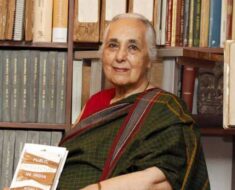Amrita Sher-Gil, a renowned Hungarian-Indian painter, is celebrated as a pioneer of modern Indian art and one of the 20th century’s greatest avant-garde women artists. Her works command the highest prices among Indian women painters, earning her the title “Indian Frida Kahlo.”
Wiki/Biography
Amrita Sher-Gil was born on Thursday, January 30, 1913 (age 28 at death), in Budapest, Hungary. An Aquarius, she displayed artistic talent early, even using her servants as models in her youth. Her early childhood was spent in Budapest. However, financial difficulties forced her family to relocate to Summer Hill in Shimla, India, in 1921, settling in a villa known as “The Holme.”
Family & Ethnicity
Amrita was baptized Roman Catholic but identified as an atheist. Her father, Umrao Singh Sher-Gil Majithia, was a Sikh aristocrat, scholar of Sanskrit and Persian, and amateur photographer. Her mother, Marie Antoinette Gottesmann, was a Hungarian Jewish opera singer from a wealthy bourgeois family; she was Umrao Singh’s second wife.
Amrita was the eldest daughter; her younger sister was Indira Sundaram, mother of contemporary artist Vivan Sundaram (author of Amrita Sher-Gil: A Self-Portrait in Letters & Writings, 2010).
Relationships & Marriage
- Early relationships included French artist Boris Tazlitsky (during her Paris studies).
- She also had relationships with painter John Walter Collins, writer Edith Lang, and lawyer/politician Badruddin Tyabji.
- In 1931, she was engaged to Yusuf Ali Khan, who left her with a venereal disease after impregnating her.
- Letters suggest relationships with women, including painter Marie Louise Chassany.
- A brief relationship with journalist Malcolm Muggeridge occurred in 1935.
- At age 25, she married her cousin, Dr. Victor Egan, in Budapest.
Career
Sher-Gil’s early paintings showed the influence of Western styles, particularly Post-Impressionism, and Hungarian painters of the Nagybanya school. In the 1930s, she immersed herself in Parisian Bohemian circles. Her 1932 oil painting, Young Girls, was a breakthrough, earning her a gold medal at the Paris Salon and election as an Associate of the Grand Salon (the youngest member and first Asian to receive the honor).
In 1933, feeling a pull towards India, she returned by the end of 1934. After meeting Malcolm Muggeridge, she painted his portrait (now at the National Gallery of Modern Art, Delhi). In 1936, encouraged by art collector Karl Khandalavala, she traveled across India, drawing inspiration from Mughal, Pahari, and Ajanta cave paintings. This led to her South Indian trilogy (Bride’s Toilet, Brahmacharis, and South Indian Villagers Going to Market).
After marrying Egan, she moved to her family’s home in Saraya, Uttar Pradesh, painting works reflecting rural life (Village Scene, In the Ladies’ Enclosure, and Siesta). In September 1941, she moved with Egan to Lahore. Later works include Tahitian (1937), Red Brick House (1938), Hill Scene (1938), and The Bride (1940). Her final work remained unfinished at her death in December 1941.
Signature
A picture autographed by Amrita Sher-Gil.
Address
23 Sir Ganga Ram Mansions, Mall Road, Lahore, Punjab, Pakistan.
Death
In December 1941, at age 28, days before a major Lahore exhibition, Sher-Gil fell ill, lapsed into a coma, and died around midnight on December 5, 1941. The cause remains uncertain, with possible explanations including a botched abortion and subsequent peritonitis. Her mother accused her husband of murder. Her husband was jailed as an enemy alien the day after her death following Britain’s declaration of war on Hungary. She was cremated on December 7, 1941, in Lahore.
Facts/Trivia
Here’s a table summarizing some key facts:
| Fact | Details |
|---|---|
| Hobbies | Reading, piano, violin |
| Parents’ Meeting | Lahore, 1912 |
| Early Artistic Guidance | Indologist Ervin Baktay |
| Early Performances | Shimla’s Gaiety Theatre |
| Parisian Influences | Paul Cézanne, Paul Gauguin, Lucien Simon |
| Political Leanings | Congress sympathiser, influenced by Gandhi |
| Artistic Style | “Fundamentally Indian” |
Amrita Sher-Gil’s legacy endures, influencing generations of Indian artists and serving as a beacon for women artists worldwide. Her works are considered national treasures, with most housed in the National Gallery of Modern Art, New Delhi.







